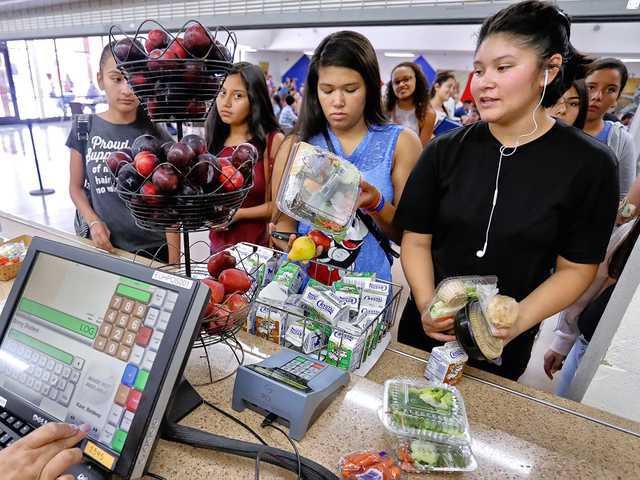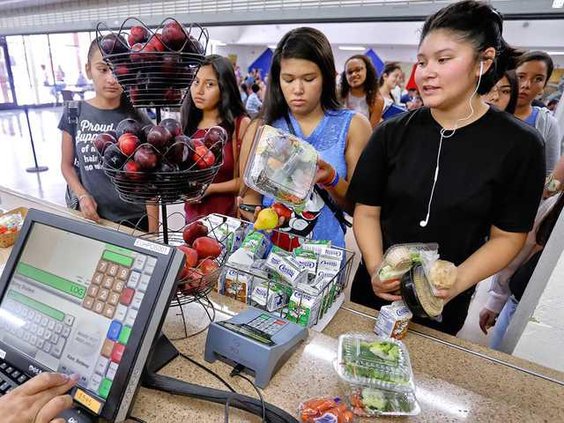Fast-food workers in California now make a minimum of $20 an hour.
Manteca Unified starts its Nutrition Services Assistant workers out at $17.89 an hour.
At first glance, it looks like the math is against MUSD when it comes to attracting food service workers.
But there are things the $20 an hour fast food job doesn’t have.
*Regular hours.
*The ability to advance into other jobs in nutritional services and other classified positions within the district that can led to fulltime employment.
*Being more conducive to parents that are looking for parttime work that can dovetail seamlessly into school schedules of their children.
*Being able to make a difference in the education of children that they serve day after day.
*Weekends off.
*Paid holidays, vacation, and sick leave.
*retirement and healthcare benefits for eligible employees.
*Ample opportunities for paid professional development.
*Support in pursuing higher education.
*Opportunities for career advancement
“It will be a challenge, but there are things we offer that fast food jobs don’t,” noted MUSD Chief Business Officer Victoria Brunn of competing with $20 minimum an hour fast food wages.”
The Nutrition Education Department has 171 cafeteria staff, including nutrition services assistants, nutrition services leads, cook/bakers, and main kitchen operators.
And like all employers, MUSD has struggled in the past few years to fill positions.
“It wasn't easy to fill positions at the beginning of the 23/24 school year, but MUSD has done a great job recruiting staff for the Nutrition Education Department,” noted Tracee Franks, who serves as director for the department.
“The $20 minimum (fast food) wage will make it challenging for MUSD to attract and fill positions,” Franks said. “However, outsiders who are not aware of the benefits of working with MUSD will find the wage attractive.”
Franks point out set schedules that align with students' schedules and calendars can appeal to parents who want to work around their students' schedules.
Currently, the Nutrition Department has a 4% vacancy rate.
On average, MUSD serves 10,830 breakfasts and 14,592 lunches on a given school day.
“Restaurants are laying off employees. They’re cutting hours,” said Eric Span, director of nutrition services for the Sweetwater Union High School District in San Diego County. “I think we should position ourselves to really talk about some stability.”
Michael Reich, a labor economics professor at the University of California-Berkeley, said those factors could favor school districts when competing for workers.
“Working in a school cafeteria gives you more stability, job security and maybe less stress than in a profit making institution,” he said. “So there’s a lot of advantages from a community standpoint. But that’s not to say they don’t also want to get more money.”
School food service workers have gotten more support in recent years under a state push to expand school meals and make them more nutritious. That included $720 million in recent years for upgrades to school kitchens to better prepare fresh meals, plus $45 million to create an apprenticeship program to professionalize the industry.
It would be difficult for lawmakers to mandate a raise for school food workers given the complexities of the state’s school funding formula. That’s why some advocacy groups, including the Chef Ann Foundation, proposed a state-funded incentive program that would have given school food workers who completed an apprenticeship program a $25,000 bonus payable over five years.
That idea didn’t make it into Democratic Gov. Gavin Newsom’s budget proposal released in January. The state is facing a multibillion dollar budget deficit, limiting new spending.
To contact Dennis Wyatt, email dwyatt@mantecabulletin.com






